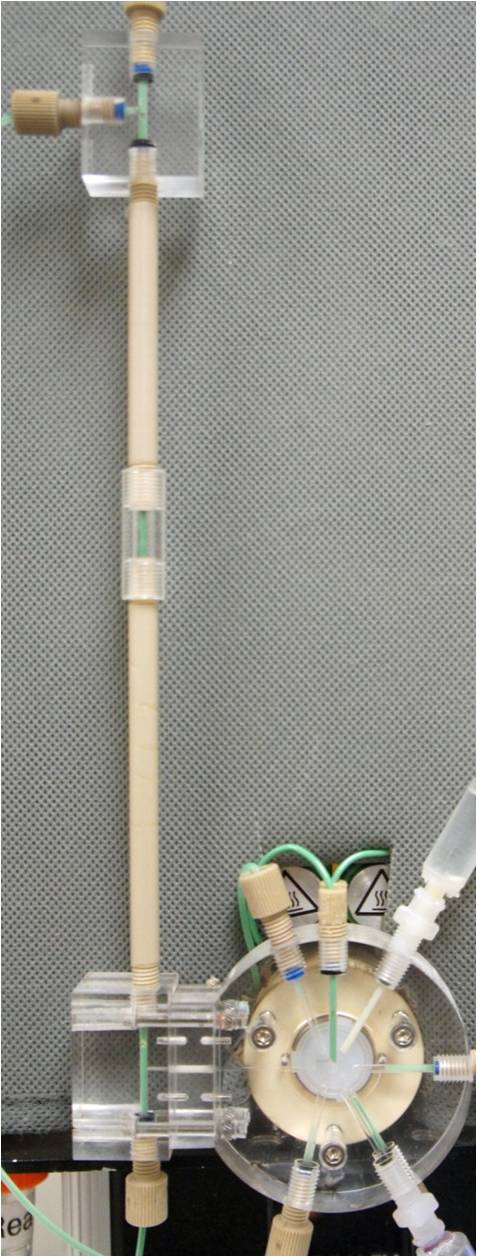Optimizing Sorbent Extraction in pFI Format
It follows from the experiments described in previous pages that the key factors for achieving maximum sensitivity of an assay, at an acceptable sampling rate are:
Automation of SE by programmable FI . The method yields reproducible results when analyzing Fe(II) at low ppB concentration range
(1.3.14.D.). If Fe(II) is pre concentrated from 1 mL of sample solution the sensitivity of spectrophotometric assay is enhanced 180x and LOD reaches 1nM Fe at a sampling rate of 12 s/hr.
Volume of sample used for the assay, enhances sensitivity in linear fashion (1.3.14.A.), reaching 1830x enhancement when sample volume is increased to 4mL. However, due to necessity of using low flowrate ( 10mcrL/sec) for on column adsorption, analyzing large sample volumes, requires long time resulting in very low sampling frequency (1.3.14.C.).
1.3.14.E.
Flow cell used in this work was configured in three versions, of increasing light path lengths and internal volumes, 5 cm (25mcrL), 10 cm (50mcrL) and 20 cm (100mcrL). The details of construction and mode of operation of this, so called Garth cell, are discussed in section (2.3.6. ). It is, of course, well known, that sensitivity of spectrophotometry linearly increases with the length of the light path, on condition that the flow cell is entirely filled with the reacted analyte. In experiments where only 1mL of sample was processed (1.3.14.B. & 1.3.14.D.), and column was eluted at 4mcrl/sec, the peak shapes indicate that Fe(II) ferrozine complex was completely eluted in 50mcrL of eluate. Therefore the calibration lines had a very similar slope, although light path of the used flow cells was 10 cm and 20cm, because the longer flow cell ( volume 100mcrL) was not entirely filled with reacted analyte. On the other hand, the experiments when 2mL of sample were processed (1.3.14.C.) show linear increase of sensitivity with flow cell length, while the enhancement increased up 1084x with 20 cm long light path. Closer examination of peak shapes and elution flowrate used in this experiment shows that Fe(II)ferrozine complex was present in 100mcrL of eluate in all three experiments and therefore 10cm and 5 cm flowcells did not accommodate all eluted analyte, resulting in loss of sensitivity. Obviously, ferrozine complex was released from the column slowly, because the rate of its release was delayed by higher load of the column. Therefore it is advisable to use a long flow cell to prevent loss of sensitivity, if the release rate from the column is slow or unknown. Fortunately the unique construction of Garth’s cell makes it possible to tailor cell length and its volume to maximize sensitivity of a spectrophotometric measurement.
Combination of long light path and large injected volume, (20 cm light path and 4mL sample volume) resulted in 1830x enhancement and LOD of 0.3nM Fe (II). (1.3.14.C.). However, these values are not likely to be achieved in real life applications for reasons discussed next.










